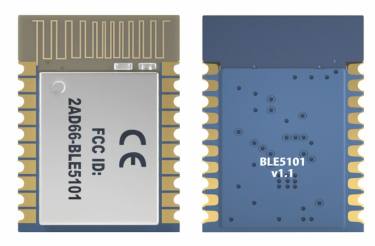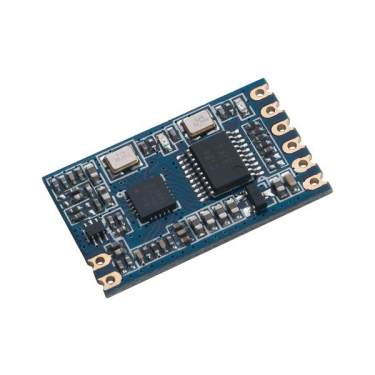Security Optimization of Embedded Network Devices: Application and Improvement of TLS Protocol in Resource-Constrained Environments
With the rapid development of the Internet of Things (IoT) and embedded systems, security risks associated with transparent network transmission have become increasingly prominent. Embedded network devices must prevent issues such as information leakage, identity spoofing, and data tampering during data transmission. The TLS protocol, with its mature encryption and authentication mechanisms, is the preferred solution for addressing these concerns. However, the computational and memory overhead of the TLS protocol presents challenges for resource-constrained embedded devices, often leading some devices to opt for less secure transparent transmission. To address this issue, this article proposes several optimization strategies to help embedded devices achieve secure network communication under resource limitations.
I. Application of Streamlined TLS Libraries
Unlike general-purpose libraries like OpenSSL and JSSE, which run on high-performance platforms, embedded devices require lightweight solutions. Libraries such as OpenSSL offer comprehensive functionality and support a wide range of encryption standards and protocols but consume significant resources, making them unsuitable for devices with limited memory and processing capabilities. Choosing a streamlined TLS library is an effective way to optimize security performance for embedded devices.
mbedTLS
Designed specifically for embedded environments, mbedTLS supports TLS/DTLS protocols and is lightweight and efficient. Developers can trim unnecessary components as needed to reduce memory usage and code size effectively.
mbedTLS Repository
wolfSSL
Another TLS library optimized for embedded systems, wolfSSL supports the latest TLS protocol versions and is compatible with various hardware accelerators to enhance encryption and decryption efficiency.
wolfSSL Repository
tinydtls
tinydtls is a minimalist encryption library focused on DTLS protocol, ideal for devices with extremely limited memory and processing power, and widely used in IoT environments.
tinydtls Repository
Using these lightweight TLS libraries allows embedded devices to maintain security while minimizing system resource demands.
II. Optimization of Certificate Management
Certificate management in the TLS protocol is core to secure communication, but its memory requirements may be too demanding for resource-limited devices. A standard TLS certificate typically requires 1-2 KB of storage, and a full certificate chain can increase this demand significantly. The following optimization strategies can address this issue:
Compressed Storage
Store certificates in compressed form using algorithms like gzip or zlib, decompressing them only when needed. This method significantly reduces storage requirements but increases computational overhead during decompression.
Block Loading
For large certificate chains, load certificates in blocks to avoid memory overflow by balancing memory load while ensuring effective certificate usage.
Read-Only Access
Store certificates directly in on-chip storage with read-only access to avoid copying them into RAM, saving memory and reducing unnecessary I/O operations.
By optimizing the storage and loading methods for certificates, embedded devices can more efficiently use limited storage resources while maintaining system security.
III. Introduction of Hardware Acceleration
The complexity of encryption algorithms usually comes with high computational load, especially when embedded devices handle large numbers of concurrent secure requests. Relying solely on the CPU for encryption tasks may not meet performance requirements. Therefore, embedded devices can improve encryption efficiency and reduce power consumption by introducing hardware acceleration modules.
AES Hardware Acceleration
AES, a widely used symmetric encryption algorithm, can benefit from hardware accelerators that significantly increase encryption and decryption speed. This is especially important in scenarios requiring real-time data processing, such as video streaming and wireless communication.
Hash Acceleration
Hash functions (e.g, SHA-256) play a critical role in data integrity checks and digital signatures. Hardware hash accelerators can significantly increase hash computation speed, optimizing the entire communication process.
RSA Acceleration
RSA encryption is crucial for key exchange during the TLS handshake, but it involves complex large-integer calculations. Dedicated RSA hardware accelerators can reduce computation time, improving handshake efficiency.
Random Number Generator (RNG)
High-quality random numbers are essential for encryption algorithm security. Hardware RNGs can generate more secure random numbers while reducing the computational burden of software-based implementations.
Hardware acceleration modules not only improve the encryption capabilities of embedded devices but also lower overall power consumption, enabling the system to operate efficiently while meeting security requirements.
IV. Conclusion
To address the performance bottlenecks and resource limitations of embedded devices using the TLS protocol, this article proposes optimization strategies such as using streamlined TLS libraries, optimizing certificate management, and introducing hardware acceleration. These methods can enhance the operational efficiency of embedded devices while ensuring secure network communication. In the future, as hardware technology advances and encryption algorithms are further optimized, embedded devices will exhibit greater performance in secure communication, providing strong support for the proliferation of IoT and smart devices.
For details, please click:https://www.nicerf.com/products/
For details, please click:https://www.nicerf.com/news/
 +86-755-23080616
+86-755-23080616
 sales@nicerf.com
sales@nicerf.com
Website: https://www.nicerf.com/
Address: 309-314, 3/F, Bldg A, Hongdu business building, Zone 43, Baoan Dist, Shenzhen, China


 English
English







